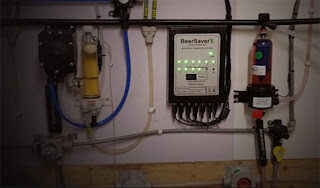Nobody Likes Beer Line Cleaning but It Has To Be Done
Beer line cleaning is one of those jobs that everybody who runs a pub, bar, club, or restaurant that serves draught beer, has to do, but we have yet to meet anyone who enjoys it. What’s more, it is a job that has o be done on a regular basis – every week in most instances - if you want to serve the perfect pint – and you do want to do that because that’s what keeps customers coming back for more.
Beer line cleaning procedures can be very tedious and time-consuming, because you have to run up and down from cellar to bar, and then you have gaps where you have to wait while the beer line cleaner goes to work, and there is nothing you can really do except sit and wait.
Beer line cleaning procedures are used to remove the contaminants which can build up in the beer lines and these can be yeast, moulds, beer stone, limescale, and bacteria.
Yeasts can be left over from the brewing process or they can be wild yeasts that float around in the air. You will usually find them on the couplers, spouts, sparklers, and drains. If they are on the couplers, they can get into the beer lines when you change casks or kegs.
Moulds come from the air in your cellar too. They just love to live in damp conditions in cool air, which is pretty much what you have in a cellar. They also grow on couplers, the tops of casks and kegs, spouts, drains, and the cellar walls themselves.
Then there is beer stone which is formed from a chemical reaction between calcium in water and oxalic acid produced during the brewing process and is called calcium oxalate. Bacteria are all around and can cause a nasty upset stomach. Limescale come from the water used to flush the lines and is worse in hard water areas.
All of these are the reasons why you need to carry out beer line cleaning procedures at least once a week, unless you have equipment which delays the build up of contaminants in the beer lines.




Comments
Post a Comment